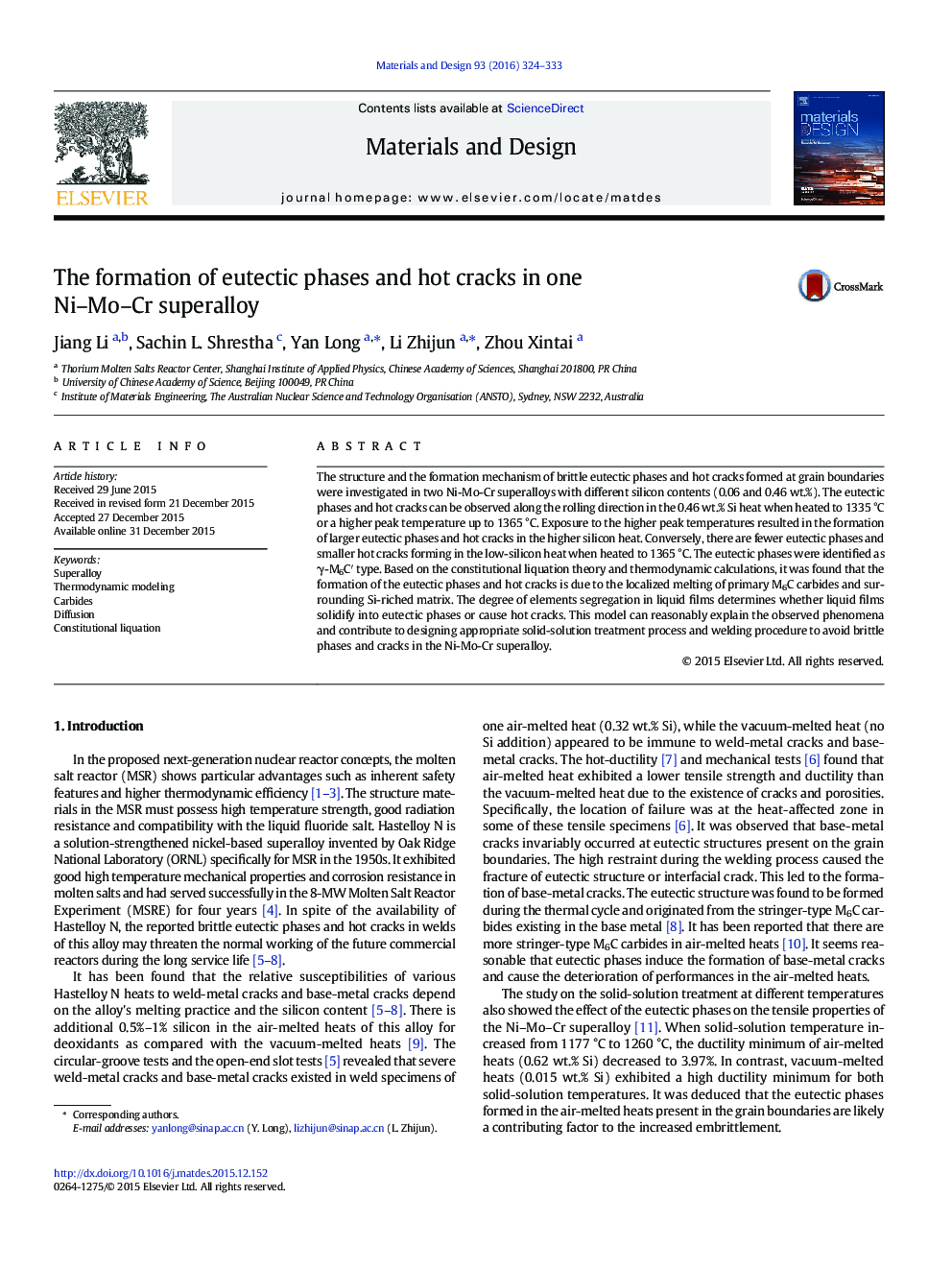| کد مقاله | کد نشریه | سال انتشار | مقاله انگلیسی | نسخه تمام متن |
|---|---|---|---|---|
| 828188 | 1470289 | 2016 | 10 صفحه PDF | دانلود رایگان |
• Correct amount of silicon alloying can extend the temperature range of M6C carbide stability in Ni–Mo–Cr to about 1380 °C.
• Localized melting of M6C causes the formation of hot cracks and eutectic phases identified as γ-M6C′ type.
• Lower Si content improves the weldability of Ni–Mo–Cr superalloy.
The structure and the formation mechanism of brittle eutectic phases and hot cracks formed at grain boundaries were investigated in two Ni-Mo-Cr superalloys with different silicon contents (0.06 and 0.46 wt.%). The eutectic phases and hot cracks can be observed along the rolling direction in the 0.46 wt.% Si heat when heated to 1335 °C or a higher peak temperature up to 1365 °C. Exposure to the higher peak temperatures resulted in the formation of larger eutectic phases and hot cracks in the higher silicon heat. Conversely, there are fewer eutectic phases and smaller hot cracks forming in the low-silicon heat when heated to 1365 °C. The eutectic phases were identified as γ-M6C′ type. Based on the constitutional liquation theory and thermodynamic calculations, it was found that the formation of the eutectic phases and hot cracks is due to the localized melting of primary M6C carbides and surrounding Si-riched matrix. The degree of elements segregation in liquid films determines whether liquid films solidify into eutectic phases or cause hot cracks. This model can reasonably explain the observed phenomena and contribute to designing appropriate solid-solution treatment process and welding procedure to avoid brittle phases and cracks in the Ni-Mo-Cr superalloy.
When Ni–Mo–Cr based superalloys were heated to 1350 °C at a rate of 20 K/min, the microstructure of low-silicon alloy reveals no obvious changes except the increase of grain size. In the standard alloy, hot cracks and eutectic phases occur at the grain boundaries. These hot cracks and eutectic phases form along the rolling direction as do the stringers of primary M6C carbides.Figure optionsDownload as PowerPoint slide
Journal: Materials & Design - Volume 93, 5 March 2016, Pages 324–333
